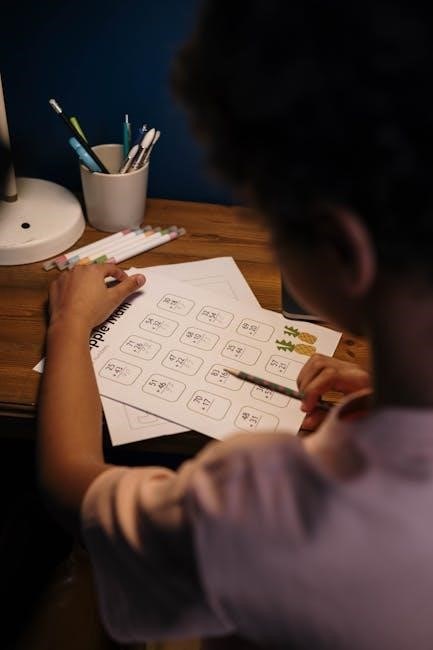Year 3 maths worksheets with answers PDF are essential resources for practising key skills. They cover topics like number, fractions, and measurement, with answers provided for self-assessment and feedback.
Importance of Year 3 Maths Worksheets
Year 3 maths worksheets are vital for reinforcing foundational skills and building confidence in young learners. They provide structured practice, helping students master concepts like number, fractions, and measurement. Regular use of these worksheets enhances problem-solving abilities and logical thinking. Worksheets also introduce real-world applications, making maths relatable and engaging. They allow parents and teachers to track progress and identify areas needing extra support. By starting with simpler questions and gradually increasing difficulty, worksheets ensure a smooth learning curve. Additionally, they encourage independent practice and make learning fun, while the included answers enable self-assessment and feedback. This makes them an invaluable tool for both home and classroom use.
Overview of the National Curriculum
The National Curriculum for Year 3 Maths is designed to build foundational skills in key areas such as number, place value, addition, subtraction, multiplication, division, fractions, measurement, geometry, and data handling. It emphasizes logical reasoning, problem-solving, and real-world applications to make maths engaging and relevant. The curriculum also focuses on developing fluency in basic arithmetic operations and introducing more complex concepts like fractions and time calculations. Worksheets aligned with these objectives ensure comprehensive coverage of topics, fostering a solid mathematical understanding. They are structured to support progressive learning, starting with simpler tasks and gradually moving to more challenging problems, ensuring students are well-prepared for future studies.
Benefits of Using Worksheets with Answers
Worksheets with answers provide immediate feedback, helping students identify strengths and areas for improvement. They enable self-assessment, fostering independence and confidence in maths skills. The structured format ensures progressive learning, starting with simpler tasks and gradually increasing in difficulty. Answers allow parents and teachers to track progress, offering targeted support where needed. These resources also reinforce classroom teaching and promote consistent practice, essential for mastering key concepts. The inclusion of answers makes worksheets a valuable tool for homework, revision, or independent study, ensuring clarity and understanding of problem-solving methods. This comprehensive approach supports overall academic development and maths fluency.
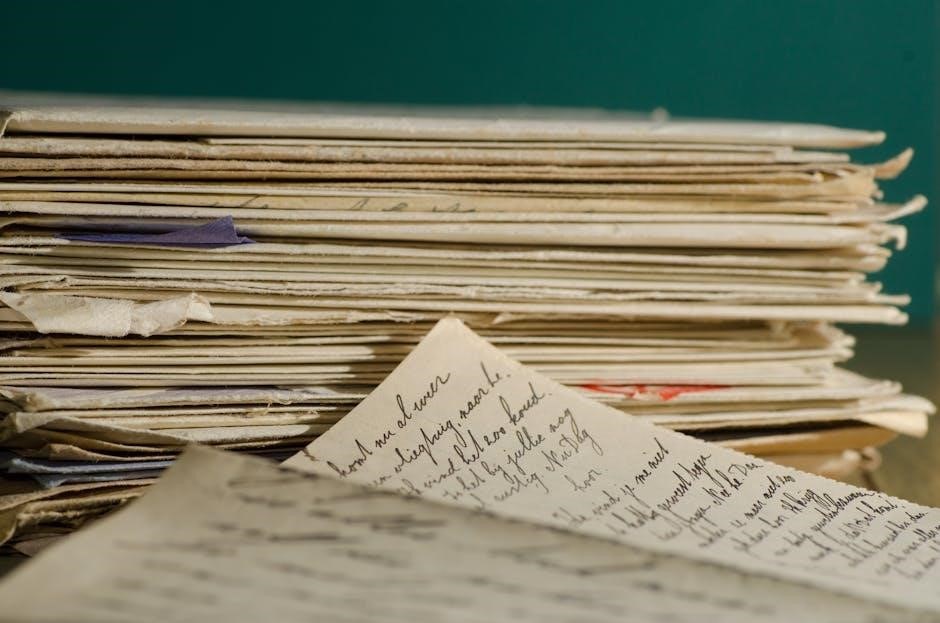
Key Topics Covered in Year 3 Maths Worksheets
Year 3 maths worksheets cover essential topics like number and place value, addition, subtraction, multiplication, division, fractions, measurement, geometry, and data handling, building foundational maths skills.
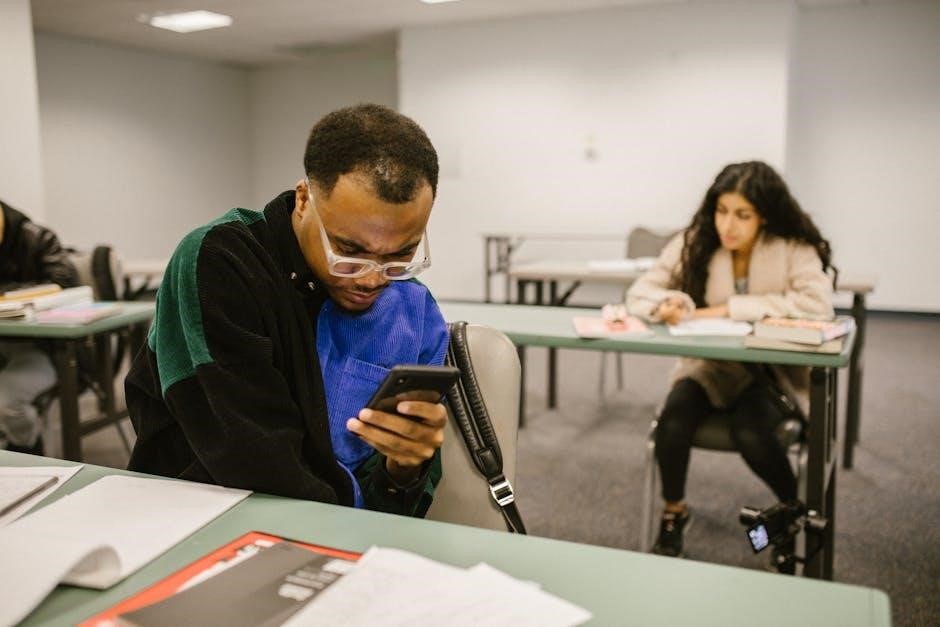
Number and Place Value
Number and place value are fundamental in Year 3 maths, focusing on understanding hundreds, tens, and units. Worksheets include activities like identifying place value, reading numbers, and regrouping in addition and subtraction.
Students learn to break down numbers into their components, enhancing their ability to perform mental calculations. These exercises also cover comparing and ordering numbers, ensuring a solid foundation for more complex maths topics later.
Worksheets with answers provide immediate feedback, helping children identify errors and improve accuracy. Regular practice reinforces number sense, preparing students for advanced arithmetic and problem-solving challenges.
Addition and Subtraction
Addition and subtraction are core skills in Year 3 maths, with worksheets focusing on mental maths, column methods, and word problems. Activities include solving simple equations and calculating totals or differences using real-world scenarios.
Worksheets often feature timed exercises to build speed and accuracy. Mixed-operation questions help students apply their knowledge in practical contexts, ensuring they can transfer skills to everyday problems. Answers are provided for immediate feedback, allowing children to track their progress and understand their mistakes.
These resources are designed to make learning engaging while reinforcing foundational arithmetic skills. Regular practice strengthens problem-solving abilities and prepares students for more complex maths topics in higher grades.
Multiplication and Division
Multiplication and division are introduced in Year 3, with worksheets focusing on basic times tables, arrays, and grouping objects. Activities include solving problems using visual aids like counters or blocks.
Worksheets often feature word problems, such as sharing items equally or calculating total quantities. Division is explored through simple fairness and grouping scenarios, while multiplication builds on repeated addition concepts.
Visual methods, like arrays and number lines, are incorporated to help students understand relationships between numbers. Answers are provided for each question, allowing children to review their work and improve accuracy.
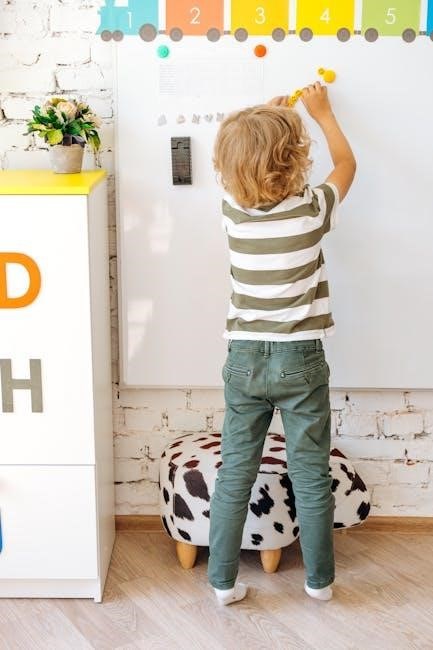
These exercises lay a strong foundation for more complex arithmetic in future years, making maths engaging and accessible for young learners.
Fractions
Fractions are introduced in Year 3 to help students understand parts of a whole. Worksheets focus on identifying and naming fractions like 1/2, 1/4, and 3/4 using visual aids such as pizzas, cakes, or shapes.
- Activities include matching fractions to pictures and comparing sizes.
- Simple operations, like adding or subtracting fractions with the same denominator, are also covered.
- Worksheets often use real-world examples, such as dividing toys or food, to make learning relatable.
- Answers are provided, allowing students to check their understanding and improve accuracy.
These exercises build a strong foundation for more complex fraction work in higher grades;
Measurement
Measurement is a key topic in Year 3 maths, focusing on length, perimeter, mass, capacity, money, and time. Worksheets help students compare and convert units, such as grams to kilograms or minutes to hours. Activities include reading analogue clocks, calculating time intervals, and solving word problems involving real-world scenarios, like measuring ingredients for a recipe or calculating travel times. Practical exercises enable students to apply their skills in everyday situations, fostering accuracy and problem-solving abilities. Answers are provided to support learning and ensure understanding of fundamental measurement concepts.
- Skills developed include estimating, comparing, and recording measurements accurately.
These resources are designed to make learning engaging and relevant.
Geometry
Year 3 geometry worksheets focus on identifying and understanding 2D and 3D shapes, their properties, and basic constructions. Students learn to classify shapes by their sides, angles, and vertices, exploring squares, triangles, rectangles, and circles. Activities include drawing diagrams, matching shapes, and solving problems involving symmetry and basic tessellation. Worksheets also introduce 3D shapes like cubes, pyramids, and prisms, helping students visualize and describe their features. Answers are provided to guide learning and ensure mastery of foundational geometry concepts. These exercises enhance spatial awareness and problem-solving skills, preparing students for more complex geometry in later years.
- Activities include identifying shapes, counting sides, and exploring symmetry.
Practical tasks make geometry engaging and accessible for young learners.
Data Handling
Data handling worksheets for Year 3 focus on collecting, organizing, and interpreting information. Students learn to create simple charts, graphs, and tables to represent data effectively. Activities include tallying, counting, and analyzing results, with questions that encourage critical thinking. Worksheets often feature real-world scenarios, such as favorite colors or pets, making learning relatable. Answers are provided to help students verify their work and understand how to present data clearly. These exercises build foundational skills in statistics and data interpretation, preparing students for more complex analysis in higher grades.
- Includes creating charts, graphs, and tables.
- Encourages interpretation of real-world data.
Clear answers support self-assessment and feedback.

How to Use Year 3 Maths Worksheets Effectively
Use Year 3 maths worksheets for independent practice, providing feedback with included answers. Incorporate real-world applications to make learning engaging and relevant, reinforcing maths skills effectively.
- Encourage self-assessment with answer keys.
- Apply maths to real-life scenarios for better understanding.
This approach fosters confidence and fluency in maths.
Encouraging Independent Practice
Year 3 maths worksheets with answers PDF are perfect for fostering independent learning. They allow students to work at their own pace, reinforcing concepts taught in class. By completing these worksheets regularly, children develop problem-solving skills and build confidence in their maths abilities. Parents and teachers can use the included answers to provide constructive feedback, helping students identify areas for improvement. Independent practice also enhances time management and self-discipline, essential skills for academic success. With clear instructions and engaging content, these resources make maths practice enjoyable and effective, ensuring a strong foundation for future learning. Regular use of these worksheets promotes a growth mindset and a love for maths.
Using Answers for Feedback
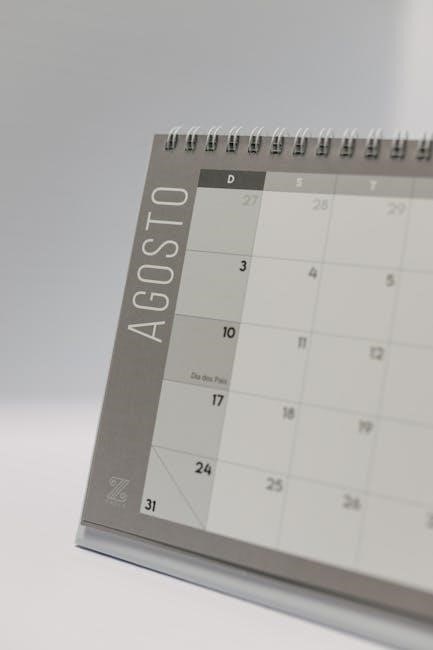
Year 3 maths worksheets with answers PDF provide an excellent way to track progress and identify areas needing improvement. The included answers enable students, parents, and teachers to review work accurately, ensuring understanding and correcting mistakes promptly. By comparing their solutions to the provided answers, children can learn from errors and develop a clearer grasp of concepts. This feedback loop supports self-assessment and fosters a deeper understanding of maths principles. Additionally, the answers serve as a valuable tool for parents and educators to guide targeted support, reinforcing learning and helping students build confidence in their abilities. Regular feedback is crucial for continuous improvement in maths skills.
Incorporating Real-World Applications
Year 3 maths worksheets with answers PDF often include real-world scenarios to make learning engaging and relatable. By connecting maths to everyday life, such as calculating money, measuring ingredients, or telling time, these worksheets help students see the practical value of their skills. This approach not only enhances problem-solving abilities but also boosts interest and motivation. Real-world applications make abstract concepts more tangible, allowing children to apply what they learn in class to real-life situations. This method of teaching maths promotes a deeper understanding and prepares students for future challenges, making their learning experience both enjoyable and meaningful. It bridges the gap between theory and practice effectively.

Recommended Sources for Year 3 Maths Worksheets
Reliable sources include free downloadable PDFs, subscription-based platforms, and curriculum-aligned workbooks. These resources provide comprehensive practice materials and support learning effectively.
Free Downloadable PDFs
Free downloadable PDFs for Year 3 maths worksheets are widely available online, offering a convenient and cost-effective way to support learning. These resources cover a variety of topics, including number, place value, fractions, and measurement, ensuring comprehensive practice. Many websites provide printable PDFs that align with the national curriculum, making them ideal for both teachers and parents. Worksheets often include answer keys, allowing for self-assessment and immediate feedback. Popular platforms like Twinkl and K5 Learning offer high-quality, teacher-made resources. These PDFs are perfect for independent practice, homework, or remote learning, catering to diverse learning needs and environments.
Subscription-Based Resources
Subscription-based resources offer premium Year 3 maths worksheets with answers, providing access to exclusive content tailored to the national curriculum. Platforms like Twinkl and Education.com provide extensive libraries of high-quality worksheets, often with additional features such as interactive activities and progress tracking. These resources cater to diverse learning needs, offering worksheets on topics like number, fractions, and geometry. Many subscription services include answer keys and marking schemes, enabling effective feedback; They also support remote learning by offering downloadable PDFs and online practice tools. Subscriptions are ideal for teachers and parents seeking structured, curriculum-aligned materials to enhance maths skills in Year 3 students, ensuring consistent and engaging practice.

Curriculum-Aligned Workbooks
Curriculum-aligned workbooks are tailored to meet the specific learning objectives of Year 3 maths, ensuring comprehensive coverage of topics like number, measurement, and geometry. These workbooks are carefully designed to align with the national curriculum, providing structured lessons and practice exercises. Many include detailed answers and marking schemes, allowing for effective self-assessment and feedback. They often feature vibrant illustrations and engaging activities to maintain student interest. Workbooks are available in both print and digital formats, offering flexibility for use in classrooms or at home. By following the curriculum closely, these resources help reinforce learning and build a strong foundation in maths for Year 3 students.

Tips for Parents and Teachers
Encourage regular practice with worksheets, provide constructive feedback, and incorporate real-world examples to make learning engaging. Create a supportive environment that fosters confidence and enjoyment in maths.

Creating a Study Schedule
Establishing a consistent study schedule is crucial for helping Year 3 students master maths skills. Set aside 20-30 minutes daily for focused practice, ensuring a balance between different topics. Begin with easier questions to build confidence, then progress to more challenging problems. Regularly review completed worksheets to identify areas needing improvement. Incorporate short breaks to maintain concentration and engagement. Consistency helps reinforce learning and develops a routine, making maths practice a manageable and enjoyable part of daily life. Use the provided answers to track progress and celebrate small achievements, fostering a positive attitude toward maths.
Providing Additional Support
For students needing extra help, Year 3 maths worksheets with answers offer targeted support. Identify areas of difficulty and use specific worksheets to address them. Break tasks into smaller steps to build confidence. Encourage the use of visual aids like number lines or counting blocks. Real-world applications, such as measuring or counting money, can make concepts relatable. Hands-on activities, like creating shapes with everyday objects, enhance understanding. Tailor support to individual needs, ensuring each child progresses at their own pace. Regularly review progress and provide positive feedback to motivate learners. Additional resources, like video tutorials or interactive games, can further reinforce maths skills and make learning enjoyable.
Making Learning Fun
Making maths engaging for Year 3 students is key to fostering a love for the subject. Incorporate fun activities like maths games, puzzles, and real-world problem-solving to make learning exciting. Use visual aids such as colourful worksheets, number lines, and shape sorters to capture their interest. Encourage hands-on activities, like measuring household items or creating geometric shapes with everyday objects. Introduce timed challenges or friendly competitions to add an element of excitement. Celebrate progress, no matter how small, to boost confidence. Pair maths with storytelling or themed worksheets to make concepts relatable and enjoyable. This approach ensures maths becomes an adventure, not just a task.
Year 3 maths worksheets with answers PDF are invaluable for reinforcing skills and building confidence. They provide clear guidance, support independent learning, and make maths practice enjoyable and effective.
Final Thoughts on Year 3 Maths Worksheets
Year 3 maths worksheets with answers PDF are a powerful tool for reinforcing mathematical concepts. They offer structured, progressive exercises that cater to diverse learning styles, helping students build confidence and fluency. With clear answers provided, these resources enable self-assessment and immediate feedback, making them ideal for independent practice. The comprehensive coverage of topics, from number skills to data handling, ensures a well-rounded understanding. Regular use of these worksheets fosters problem-solving abilities and logical thinking, while their accessibility in PDF format makes them convenient for both home and classroom use. They are an invaluable resource for teachers and parents aiming to support continuous learning and academic success.
Encouraging Continuous Learning
Year 3 maths worksheets with answers PDF are a fantastic way to promote continuous learning. Regular practice helps students build confidence and fluency in maths skills. By incorporating these resources into daily routines, children can reinforce concepts learned in class and explore new challenges. The structured format of the worksheets, combined with real-world applications, makes learning engaging and relevant. Parents and teachers can use the answers to track progress and provide targeted support. Encouraging consistent use of these worksheets fosters a growth mindset, helping students view maths as an exciting and achievable subject. This approach ensures steady improvement and a strong foundation for future academic success.
